The difference between the treatment of coffee bean honey and raisin honey by Costa Rican musicians
Professional coffee knowledge exchange more coffee bean information please follow the coffee workshop (Wechat official account cafe_style)
Qianjie Coffee and many coffee gluttons said of Costa Rican coffee that "the coffee in this country is quite mild and supple, with both sour, sweet and bitter flavors of chocolate nuts, and the overall flavor is well balanced." The country's original honey treatment adds a lot of sweetness to the flavor of Costa Rican coffee.
Development of planting industry in Costa Rica
Costa Rican coffee industry began to pursue further studies, and the first batch of coffee was shipped to Colombia and Chile in 1820. In 1825 the government continued to promote coffee cultivation by exempting coffee from certain taxes. In 1831, the local government issued an order that if someone planted coffee on fallow land for more than five years, they could acquire the ownership of the land. The real export of coffee began in 1832.
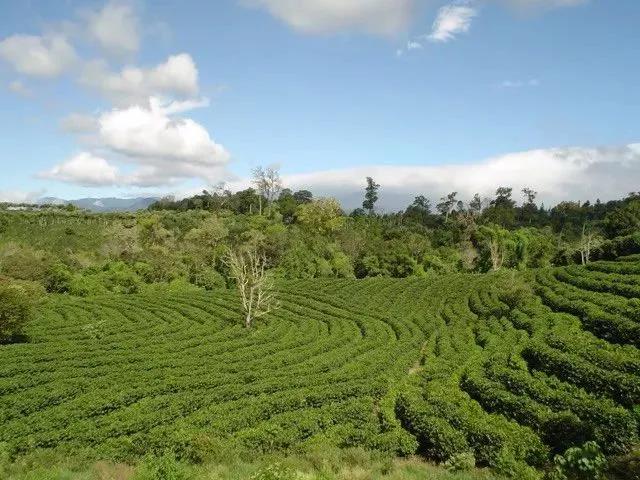
In 1843, shortly after the British increased their investment in Costa Rica, the two places began to export directly. In 1854, with the help of British merchant ships, an importer successfully imported more than 100 tons of coffee into London and became popular, which was praised as the "golden bean" from Costa Rica by the British nobles at that time. The Bank of Anglo Costa Rican was founded in 1863 in Colombia to provide funds for the development of the industry.
Coffee industry promotes infrastructure development in Costa Rica
Coffee was the only export product in the country during the 50 years from 1846 to 1890. The production of coffee has also promoted the development of infrastructure, such as the first railway across the country to Great Hope, as well as hospitals, post offices and so on. Costa Rica's coffee infrastructure has been used for a long time to help get better prices in the international market. Coffee bean washing treatment in 1830, to 1905, there are 200 water washing treatment plants.
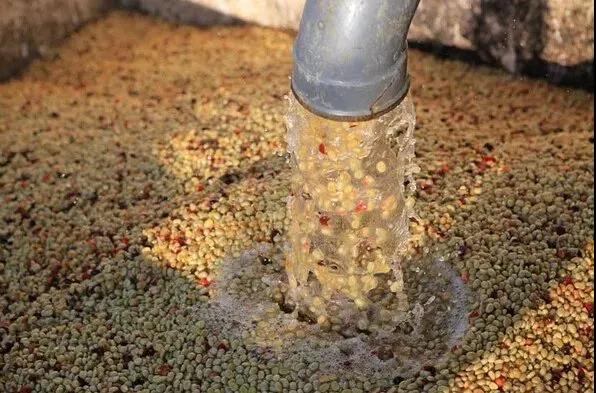
The government protects coffee growers.
In 1933, due to pressure from various coffee producing areas, the government set up a rather powerful coffee defense agency (Institute For The Defence Of Coffee). At first, the function of the agency was to protect small coffee farmers from exploitation, to prevent profiteers from buying the coffee fruits cheaply and then selling them at high prices. In 1948, the agency was renamed Oficina del Cafe, and some of its functions were transferred to the government's Ministry of Agriculture. Today, the organization is known as Instuto del cafe de Costa Rica (ICAFE), which is deeply involved in the coffee industry, setting up experimental farms and promoting boutique coffee beans from Costa Rica around the world. The organization is funded by 1.5% of the profits from the export of Costa Rican coffee.
Original treatment method of "sweetness into honey"
In the middle and late 21st century, many microprocessing plants began to appear in China. Coffee farmers each bet on their own post-harvest equipment, so they are able to handle most of their own coffee, which also means they have more control over their respective coffees and styles. Costa Rica mainly grows Kaddura and Kaduai, with elegant flavor of coffee varieties. Originally, Costa Rica mostly used washing method to treat coffee, but in recent years, there has been an alternative coffee bean treatment method Mile, also known as honey treatment (Honey coffee).
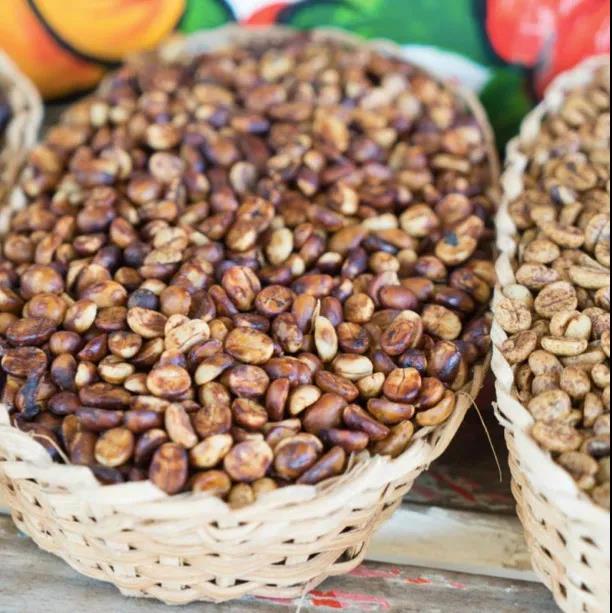
The treatment method improves the Brazilian semi-sun method to increase sweetness. The key point is to completely retain the pectin layer on the coffee beans as much as possible. After removing the peel, the sticky coffee beans are taken to the elevated shed for exposure to the sun for about one to two weeks. During this period, the coffee beans are removed every hour to make the coffee beans evenly dry, so that the coffee beans fully absorb the sugar in the pectin. The former street thinks that the coffee beans of the honey treatment method have better flavor, and the acidity and sweetness are balanced. Because of the sun, The aroma of coffee beans themselves will also be amplified, alcohol flavor is strong, the disadvantage of this treatment method is that the risk of treatment is high, easy to mold corruption.
Relationship between honey treatment and honey treatment of raisins
Raisin honey treatment method is to retain 100% pectin and zero water treatment method. The difficulty of honey processing method is improved, which requires strict control of time. On the day of harvesting coffee cherries, the harvested coffee fruits are poured into a large tank, and the ripe and full fruits will sink to the bottom; the immature or overripe fruits will float to the surface, and these floating beans need to be removed. The sifted coffee cherries are allowed to dry on an elevated bed for at least three days, then the cherry skins are removed and the pectin retained before drying. At this stage, climatic factors are key to successful honey treatment.
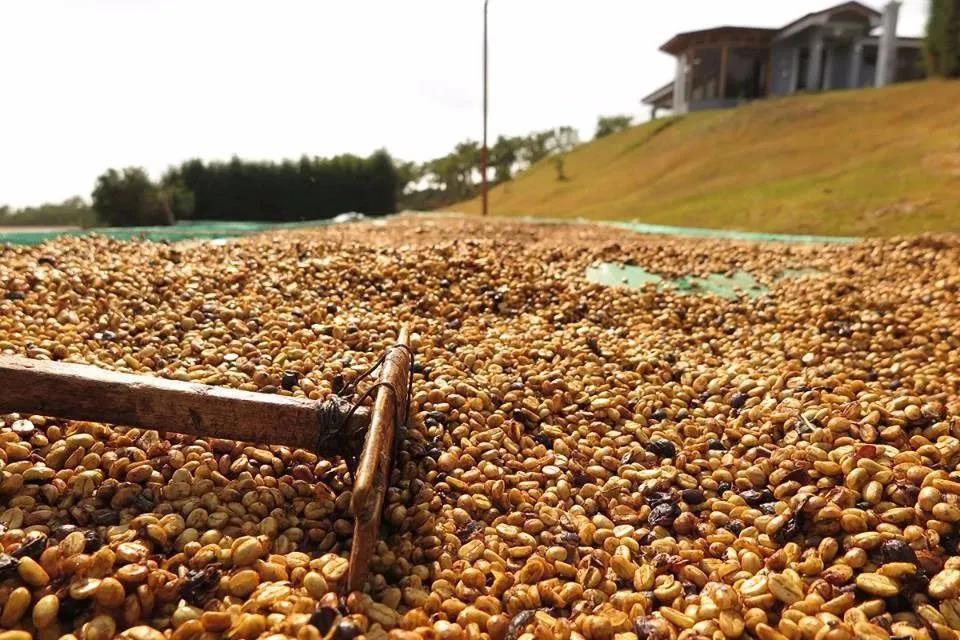
In the drying process to constantly flip these coffee cherries to make the drying uniform, but to grasp the frequency of flipping, to dry slowly to ensure that the coffee has fermentation treatment, but not too slow to appear excessive fermentation; this sweet raisin honey treatment, so that the coffee flavor has the taste of white wine and balanced acidity, fermented aroma is also relatively rich.
Costa Rican coffee producing area
There are seven coffee producing areas in Costa Rica, including West Valley in the western valley, Central Valley in the central valley, Tarrazu in Tarasu, Tres Rios in Sanshui River, Orosi in Europe, Brunca in Brenka and Duli Alba Turrialba. Among them, the Central Valley, Tarazhu and Sanshui River producing areas are the most famous. In principle, coffee sloping towards the Pacific will be of better quality than coffee facing the Atlantic.
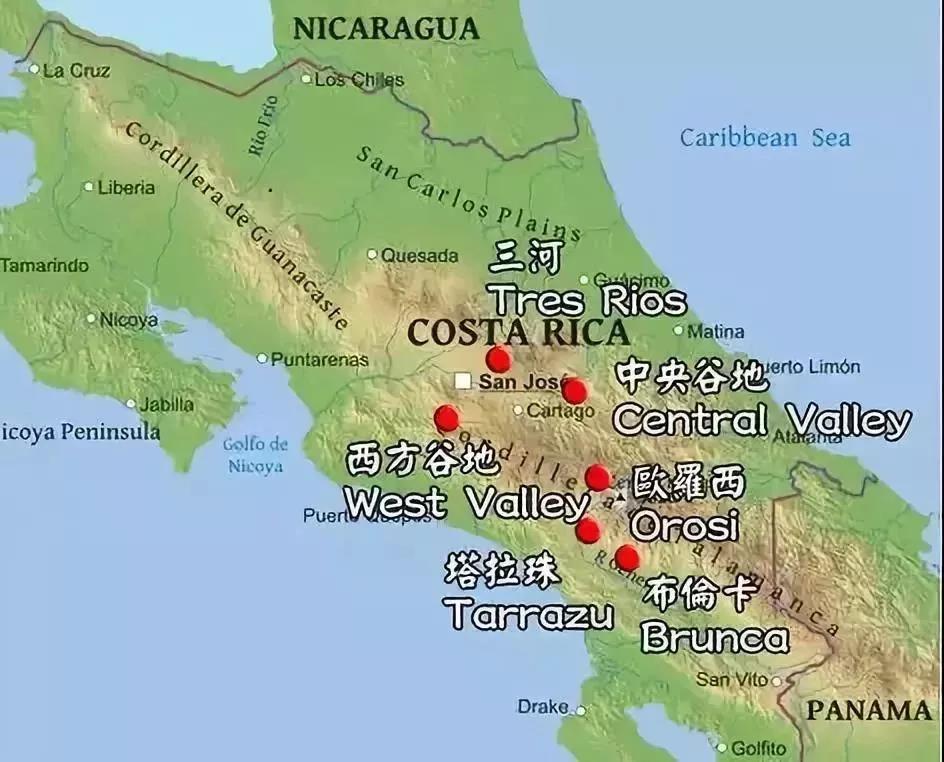
Central Valley Central Valley
1200-1600 meters above sea level, from November to March, this production area has three sub-producing areas, namely, San Jose, Eredia and Alajuela. There are three high-altitude volcanoes in the producing area: Irazu, Barva and Poas, which provide rich nutrients for the surrounding coffee producing areas. The excellent micro-climate and the two volcanic fertile soils of Po á s and Barva make the beans in this area have superior characteristics, such as chocolate cocoa flavor, bright acidity and elegant aroma. The Central Valley is also the first area in Costa Rica to grow coffee, and then to other regions to develop the country's coffee industry, moderate rainfall 118in annual rainfall, an average annual temperature of only 19 ℃, coupled with high altitude, so the bean hard aroma, smooth, high acidity, full-bodied, rich aroma, coffee in this area is the earliest coffee growing area in Costa Rica, Qianjie believes that the area is rich in volcanic soil, sometimes with chocolate aroma. The front section is washed and the back section is dried by machine at low temperature.
Sanshuihe Tres Rios
From 1200 to 1650 meters above sea level, from December to March, the Yilazhu volcano and rivers not far to the east of the capital form an excellent micro-climate zone, but in recent years, the urban area has gradually extended to the suburbs, and agricultural land has been sold to developers, resulting in a sharp decline in coffee production in Sanhe District. Almost half of the output is contracted by Starbucks, which is not easy to buy in the industry. Aquez Grass, a well-known farm in this area, has persisted since 1857. Qianjie believes that the coffee in this producing area has bright acidity, soft and unsharp, nuts, floral taffy, sweet and charming, smooth high acidity, hard, full-bodied beans and rich aroma. The climatic conditions are good, the taste is obvious, and the balance is very good.
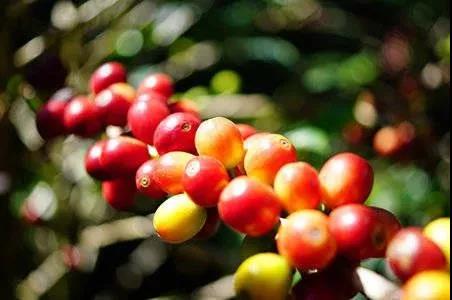
Tarazhu Tarrazu
1200-1700 meters above sea level, from December to March, coffee tastes smooth, high acidity, hard and full-bodied beans, rich aroma, this area is a world-famous producing area, the main feature is the high seafood area to create an incomparable perfect taste. Tarasu is located in the fertile volcanic region of Central America, which has a humid climate and fertile volcanic soil, abundant rainfall throughout the year, high altitude, and dense forest natural shade, providing a unique growth environment for coffee growth. Pesticides or artificial fertilizers are not used in the planting process. Nearly 95% of the coffee beans produced in Tarazhu Alpine are very hard beans (SHB), which generally grow above 1500 meters above sea level.
At present, there are 26 member manors in Tara Zhu production area, among which the musician series of Carnett Manor is the beginning for many rookies who have just started to get to know Costa Rican coffee beans.
Carnett Manor
Carnett Manor is owned by three brothers who have grown coffee beans for more than 10 years and have a small coffee processing plant. The origin of the musician series of coffee beans is that the owner of Carnett Manor loves classical music, so the coffee beans produced by the estate are named after "Beethoven", "Bach", "Chopin" and "Mozart". This series of coffee uses Kaddura and Kaduai coffee beans to do raisin honey treatment and washing treatment to show the flavor of each coffee. The musicians on Qianjie are Beethoven, Bach and Mozart.
Coffee cultivars
Kaddura: a natural variety of bourbon, it was discovered in Brazil in 1937. Its tree is not as tall as bourbon and smaller. Due to inheriting the blood of bourbon, the disease resistance is relatively weak, but the yield is higher than that of bourbon. Although found in Brazil, Kaddura is not suitable for growing in Brazil, so it is not planted on a large scale in Brazil, but is popular in Central and South America, such as Colombia, Costa Rica and Nicaragua. Kaddura is planted on a large scale.
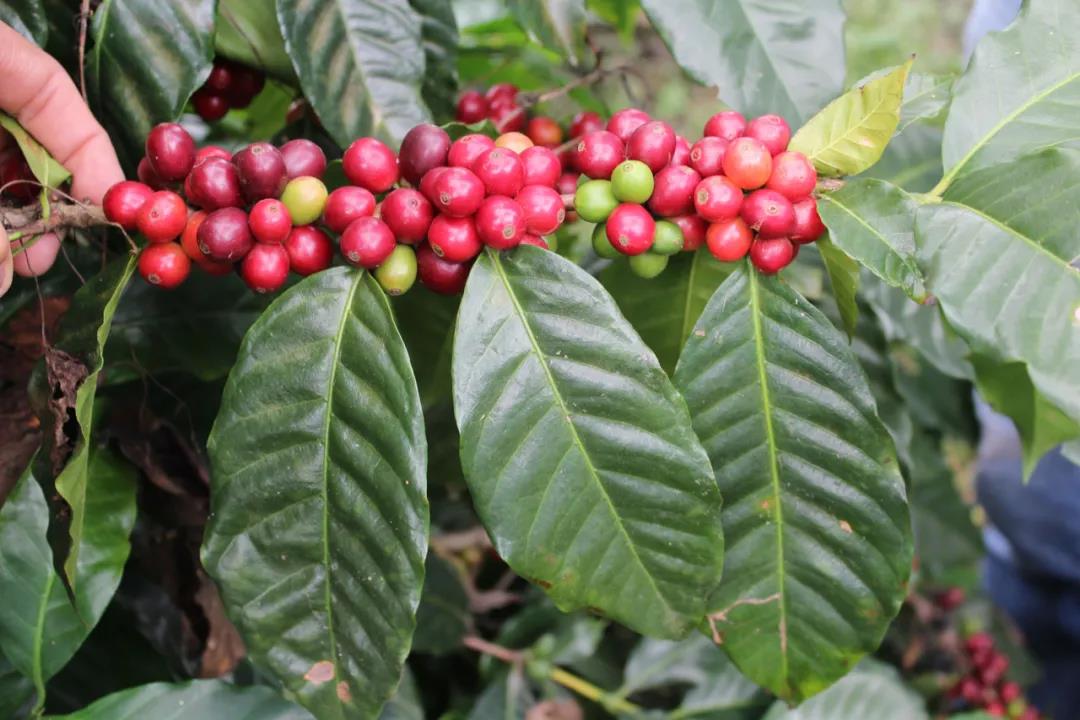
Kaduai: coffee variety artificially crossed by Kaddura and New World (Mondu Novo). Kaduai inherits Kaddura's small trees, which do not need shade, are easy to grow and easy to pick. It also has a better ability to resist natural disasters than the New World. It has a good acidity in flavor. Kaduai generally presents two types of red fruit and yellow fruit.
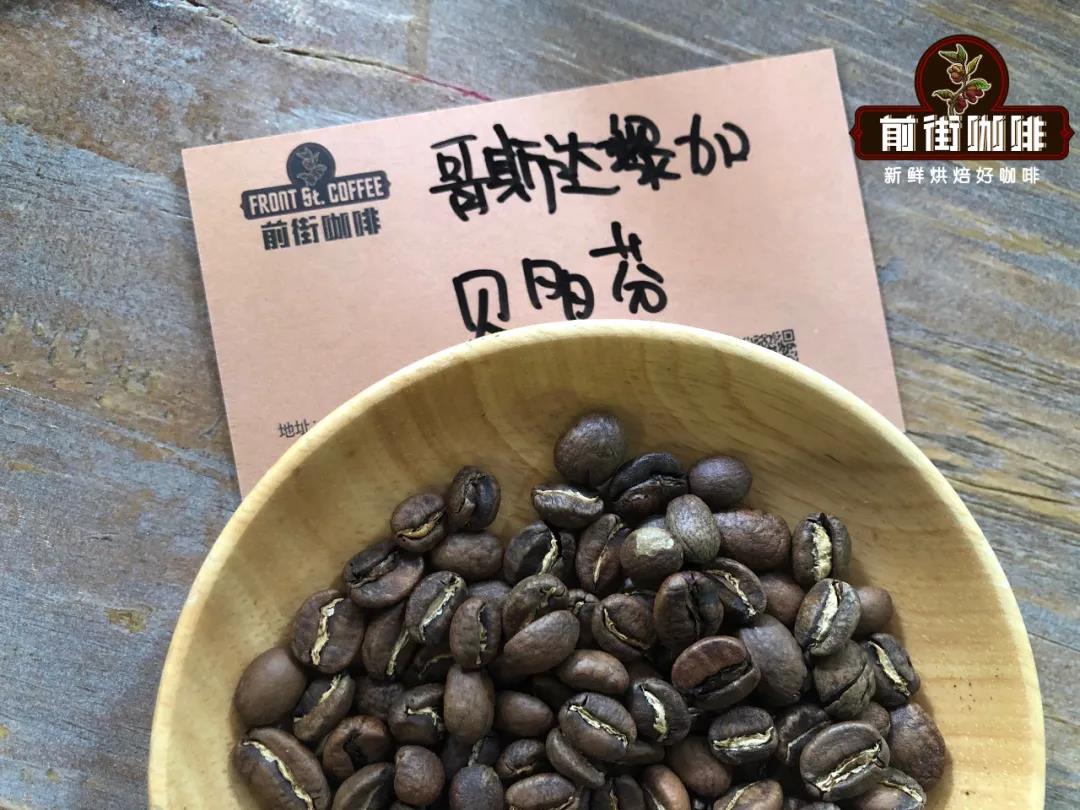
Costa Rican Carnett musicians Beethoven series
Country: Costa Rica
Producing area: Tarazhu
Altitude: 1900m
Treatment: washing treatment
Grade: SHB
Variety: Huang Kaduai
Nothing is more famous for romantic classical music than Beethoven, and drinking coffee beans that will be associated with Beethoven music, its flavor naturally goes without saying, and the dry aroma has obvious red berries, of which strawberries are the most obvious and exude the smell of flowers. When cooking, you can feel the fragrance of flowers, nectar-like sweetness and green grapes. After the entrance of Beethoven coffee, there is a sweet and sour taste of green grapes and red berries, the whole is clean and smooth. The red berries will be more obvious when they are cold. There is even a foreign coffee Blog said that this is a summer romantic coffee.
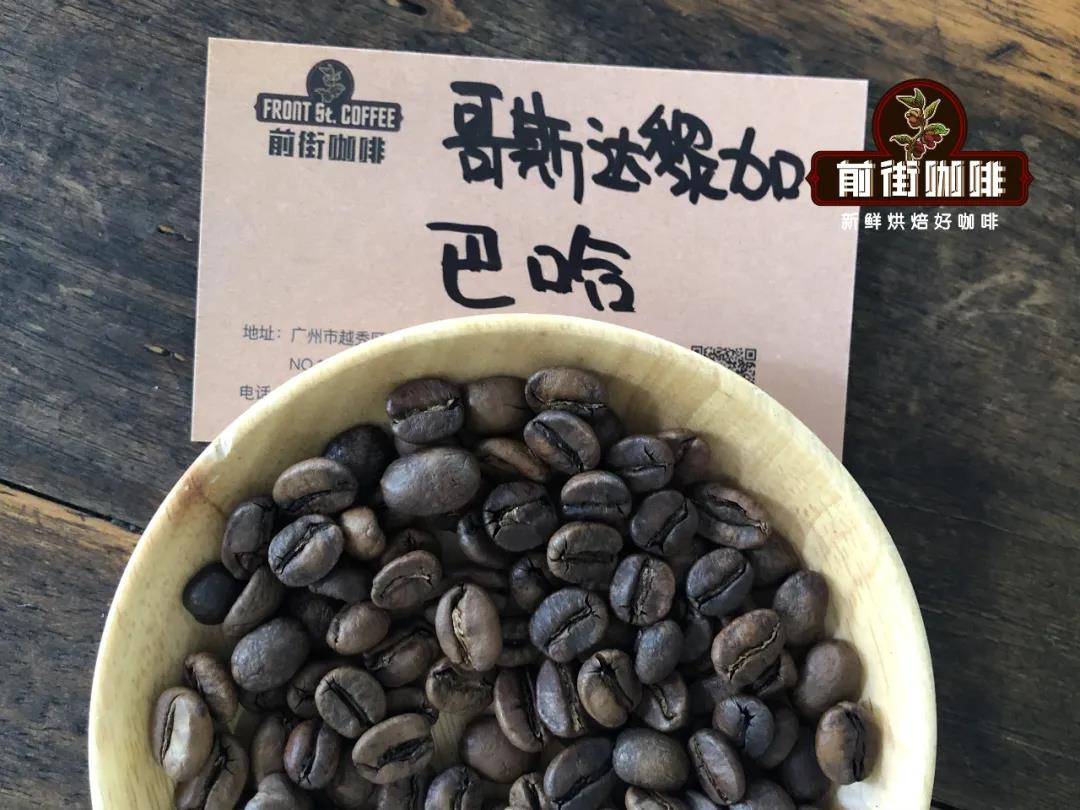
Costa Rican Carnett musician series Bach
Country: Costa Rica
Producing area: Tarazhu
Altitude: 1950m
Treatment: raisin honey treatment
Grade: very hard bean SHB
Variety: Kaddura
Bach's music is exquisite, rich and organized at the same time. The coffee beans, called Bach, are dried with fruit aromas such as strawberries, blackberries and raisins. When it is just cooked, the aroma of flowers and fruit is obvious, and after the entrance, it also feels rich fruit aroma and sweet and sour feeling, with a slight wine aroma in the middle and back, such as red wine. After cooling down, it has a sweet aroma of candied fruit, and the aroma of the wine is more obvious, and you can even feel the flavor of plum wine. Every mouthful seems to be in the splendor and rigor of baroque aesthetics.
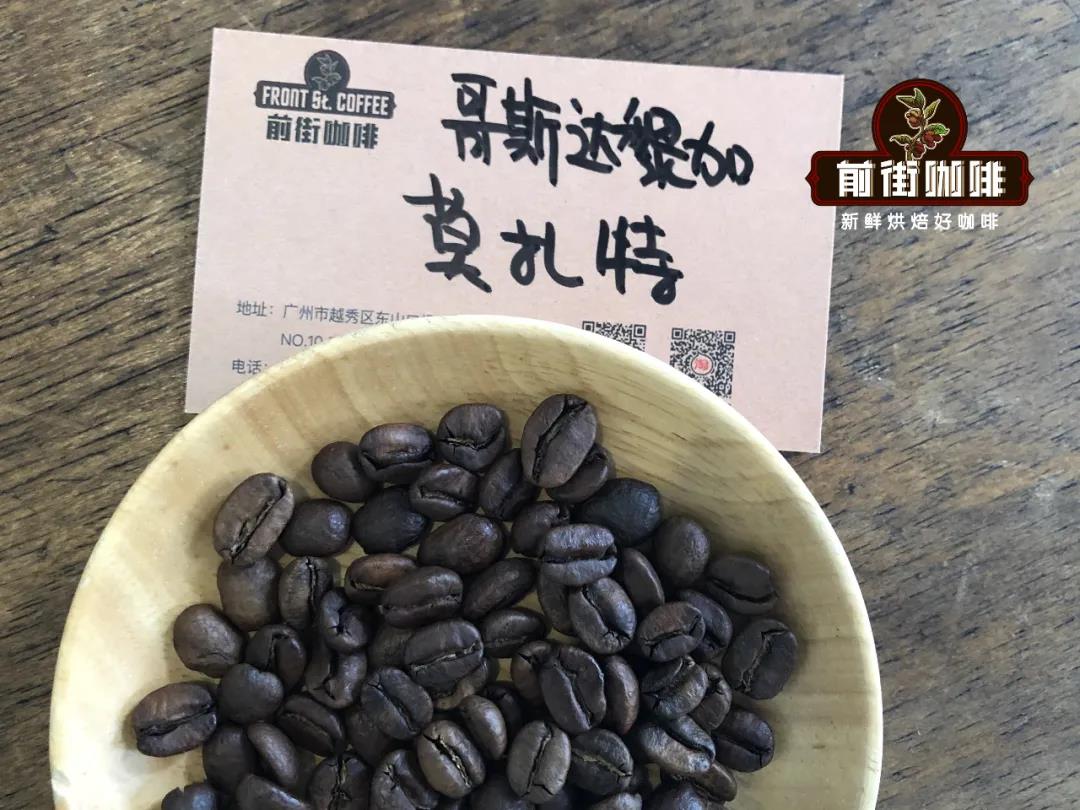
Costa Rican Carnett musician series Mozart
Country: Costa Rica
Producing area: Tarazhu
Altitude: 1800m
Treatment: raisin honey treatment
Grade: SHB
Variety: Kaduai, Kaddura
Classical music collection of its successful child prodigy Mozart, gorgeous! Gorgeous fragrance: elegant floral fragrance, white flower aroma like orange blossom, can also be felt when brewing. Gorgeous palate: more dark berries, raisins and traces of red berries, with slightly sour plums and sweet bear fudge in the middle and back. After cooling down, it still retains the fragrance and sweetness of the flowers. Unlike in the past, Mozart coffee beans, which used yellow Kaduai varieties treated with red honey, are famous for their unrestrained floral fragrance, this time using the sweetness of Kaddura and Kaduai as the representative of Mozart.
Qianjie Coffee Baking record
Costa Rican Beethoven coffee bean roasting: roaster Yangjia 800N semi-direct fire, roasting capacity 300g. The furnace temperature is preheated to 170℃ to enter the pot, the firepower is adjusted to 120mm, the throttle is opened to 3, and the temperature return point is 1mm / 391036 "to keep the firepower; at 140℃, the firepower remains the same, the throttle is opened to 4.5pm / 3955" turns yellow, the smell of grass disappears, entering the dehydration stage, the firepower is lowered to 100at 151℃, and the throttle is kept at 4. Adjust the firepower to 85 at 176℃, the throttle will not change.
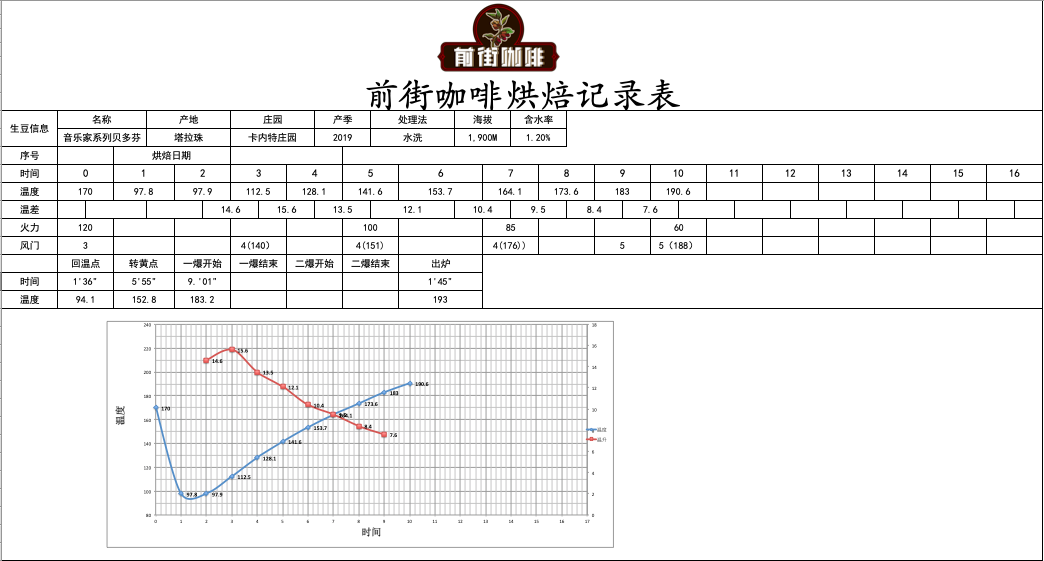
After dehydration, the bean surface appears wrinkles and black markings, and the smell of toast changes to coffee, which is a prelude to an explosion. Listen to the sound of an explosion. When the sound of the explosion begins, the throttle is fully open for 5, and the firepower remains unchanged. After an explosion, the development time is 1mm, 39th, 45th, and the pot is 193 ℃.
Costa Rica Bach coffee bean roasting: roaster Yangjia 800N semi-direct fire, roasting capacity 300g. The furnace temperature is preheated to 180 ℃ to enter the pot, the firepower is adjusted to 130, the throttle opens to 3, and the temperature return point is 1 / 3 / 39 / 43 "to keep the firepower; at 140 ℃, the firepower remains the same, the throttle is opened to 4. 6 ℃ / 39 / 15" turns yellow, the smell of grass disappears, entering the dehydration stage, the firepower is lowered to 100 at 151 ℃ and the throttle remains 4. Adjust the firepower to 70 at 176℃, the throttle will not change.
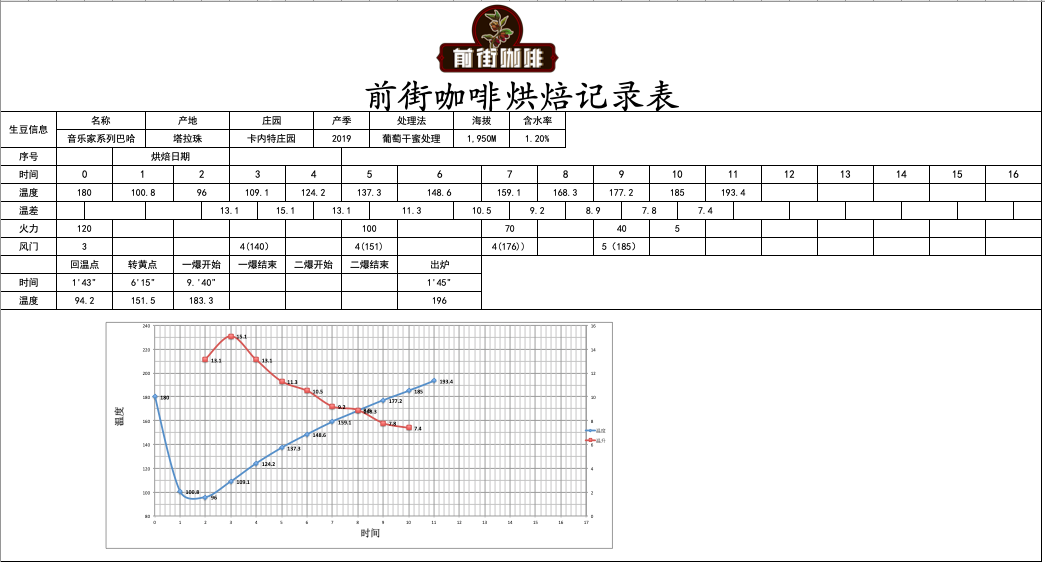
After dehydration, the bean surface appears wrinkles and black markings, and the smell of toast changes to coffee, which is a prelude to an explosion. Listen to the sound of an explosion. When the sound of the explosion begins, the throttle is fully open for 5, and the firepower remains the same. After an explosion, the development time is 1mm, 39th, 45th, to 196℃, put into the pot.
Costa Rican Mozart coffee bean roasting: roaster Yang family 800N semi-direct fire, roasting capacity 300g. The furnace temperature is preheated to 200℃ into the pot, the firepower is adjusted to 160, the throttle is opened to 3, the temperature recovery point is 1mm / 39th / 36 ", keep the firepower; at 140℃, the firepower is adjusted to 160and the throttle is opened to 4.5mm / s / 39th / 20" turns yellow, the smell of grass disappears, entering the dehydration stage, the firepower is lowered to 130at 166℃, and the throttle is kept at 4. Adjust the firepower to 100 at 176℃, the throttle will not change.
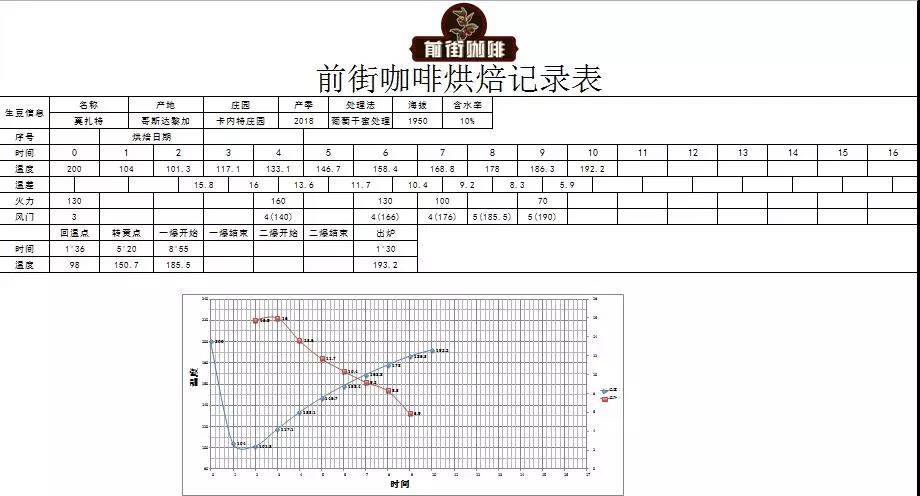
At the end of dehydration, wrinkles and black markings appear on the bean surface, and the smell of toast changes to coffee, which is a prelude to an explosion. Listen to the sound of an explosion. When it starts to explode, the throttle is fully open, and the firepower remains the same. After an explosion, the development time is 1mm, 39th, 30th, and 193.2 ℃.
Coffee cup test report on Qianjie
Costa Rican musician Beethoven Coffee beans
Dry fragrance: ripe papaya, flower and fruit aroma
Wet fragrance: ripe papaya, berries
Entrance: floral aroma, citrus, berries, fermentation, almonds
Costa Rican musician Bach Coffee beans
Dry aroma: berries, fermented fragrance
Wet fragrance: berries, ripe fruit
Entrance: fermented wine, flower, ripe fruit, fragrant pear

Costa Rican Mozart coffee beans
Dried incense: orange, flower fragrance
Wet fragrance: berries, raisins
Entrance: raisins, rose, oranges, berries, wind, caramel
Experience of brewing coffee in Qianjie
Filter cup: V60 # 01
Powder content: 15g
Ratio of powder to water: 1:15
Degree of grinding: BG6m (pass rate of No. 20 screen is 80%)
Water temperature: 90-91 degrees
* with regard to the degree of grinding, Qianjie is determined by screening this method. According to the grinding advice provided by the American Fine Coffee Association SCA for hand-brewed coffee, Qianjie combined with the actual operation verification, using different degrees of grinding to brew, there is a significant gap in the finished products, and the degree of grinding of each type of coffee beans will be different, this is the significance of sifting. If you don't have a sieve at home, Qianjie Coffee suggests observing the speed of the water to judge that if the flow is too fast, it is coarse, and if the flow is too slow, it is fine.
Qianjie coffee is extracted by stages, also known as three-stage brewing: steaming with 30 grams of water for 30 seconds, injecting water around a circle to 125 grams for stages, continuing to inject water to 225 grams when the water level is about to be exposed to the powder bed, removing the filter cup when the water level is about to be exposed to the powder bed, (steaming starting timing) the extraction time is 1 "3955"-2 "3905".
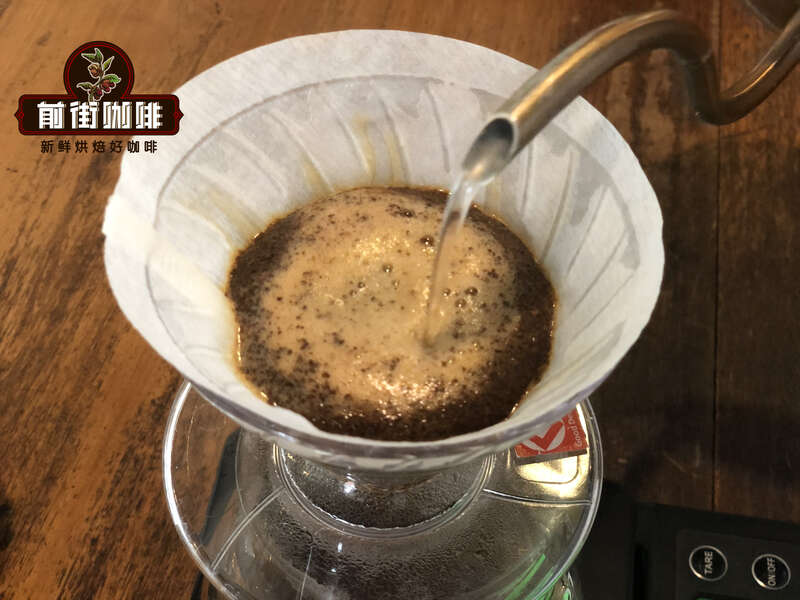
Baachong flavor: it smells like the fermented aroma of rice wine, with sweet and sour taste of ripe tropical fruits and berries, nutty and creamy flavor, caramel in Huigan and a hint of flowers in the finish.
Beethoven cooking flavor: green grape, vanilla, strawberry, melon, citrus aroma, red pomegranate juice sour, clean, smooth taste, with a little green kiwi acid.
Mozart cooking flavor: the entrance is a complex bouquet of flowers and fermented sauce, with raisins and dried fruit-like sweetness, with sour notes of carambola and berries, sucrose back to sweet.
For more boutique coffee beans, please add private Qianjie coffee on Wechat. WeChat account: kaixinguoguo0925
Important Notice :
前街咖啡 FrontStreet Coffee has moved to new addredd:
FrontStreet Coffee Address: 315,Donghua East Road,GuangZhou
Tel:020 38364473
- Prev
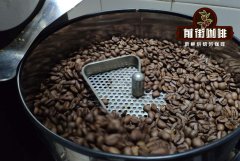
Where does the coffee aroma come from? How does coffee taste sweet and sour?
Roasting is one of the most attractive aspects of the coffee industry. Green coffee beans have almost no flavor at all, taste will have a rather unpleasant vegetable flavor, but after roasting, it will transform into an incredibly aromatic and complex coffee beans. The smell of freshly roasted coffee beans is refreshing and delicious. Fast or slow? Shallow or deep? jianyan
- Next
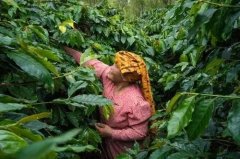
Why are gold manning more expensive than your coffee beans? How to cook golden manning coffee beans
Professional coffee knowledge exchange more coffee bean information Please follow the coffee workshop (Wechat official account cafe_style) if you ask Qianjie if there are any beans that are not sour, all my colleagues in Qianjie will certainly move out Manning Coffee from Indonesia when recommending coffee beans. Coffee alcohol in Indonesia is thicker than coffee beans in Central and South America and Asia, and less acidic than the other two.
Related
- Beginners will see the "Coffee pull flower" guide!
- What is the difference between ice blog purified milk and ordinary milk coffee?
- Why is the Philippines the largest producer of crops in Liberia?
- For coffee extraction, should the fine powder be retained?
- How does extracted espresso fill pressed powder? How much strength does it take to press the powder?
- How to make jasmine cold extract coffee? Is the jasmine + latte good?
- Will this little toy really make the coffee taste better? How does Lily Drip affect coffee extraction?
- Will the action of slapping the filter cup also affect coffee extraction?
- What's the difference between powder-to-water ratio and powder-to-liquid ratio?
- What is the Ethiopian local species? What does it have to do with Heirloom native species?

